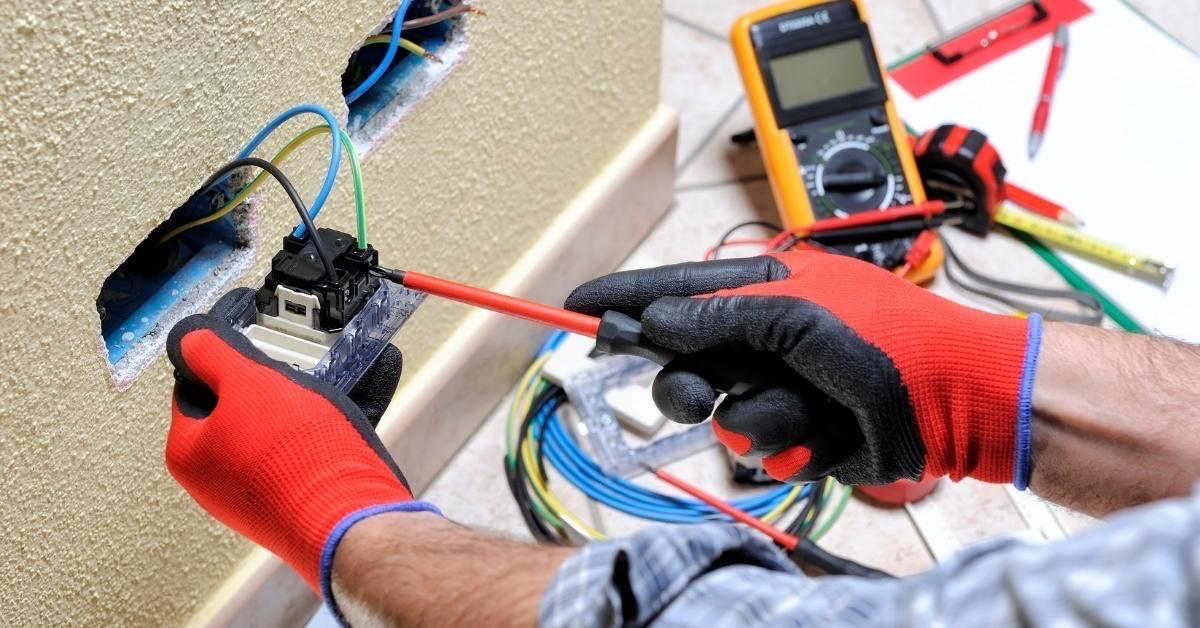Things to Consider When Installing Residential and Commercial Electrical Systems
by siteadmin

Commercial electrical installations differ from residential ones. They have higher load demands, unique energy needs and a different setup.
Malls, hospitals, and retail establishments are among the projects completed by commercial electricians like Ampi Electric Inc. They possess the professional credentials and licensing needed for residential electricians. Additionally, they employ heavier machinery and supplies than residential ones. Visit Ampi Electric Inc.'s website and click https://www.ampi-electricinc.com/ to learn more about their services.
Cables
Many homeowners use non-armored, non-metallic sheathed wires cables to connect electrical appliances to their homes’ breaker boxes. This type of wiring is not rated for outdoor use and can degrade quickly when exposed to the elements, but it is convenient and inexpensive.
Cable wires must be made up of multiple insulated copper conductors and a bare ground wire, all contained within a plastic sheath. This sheath is not conductive, and it has a fire retardant coating that also keeps moisture from seeping in and damaging the inner wiring. These features make it ideal for residential wiring projects.
When purchasing Cable wires, look for a label that indicates the gauge of the wire inside (typically 10 or 12), as well as how many conductors it contains. For example, contains a black (hot) wire, a white (neutral) wire and an unsheathed bare copper wire for grounding. This particular type of wiring is used for most lights and outlets in a home.
NM wires are commonly used in residential construction and are UL listed for use in certain commercial buildings. Nevertheless, there are specific regulations that need to be followed when using this type of wire, and it is best to hire an experienced electrician for the task.
Residential wiring must comply with regulations set out in the National Electric Code and state and local building codes. In order to ensure that all of the wires in a residence are up to code, the wires must be separated into separate circuits. The most common method for creating these separate circuits is by installing NM sheathed wire.
Although NM wires are able to be run indoors without conduit, it is advisable for contractors to use MC wire instead. Unlike Romex, MC wire is designed for outdoor use and has built-in protection that makes it able to stand up to the elements.
Aside from the added benefit of being able to be installed outdoors, MC wire has a number of other benefits that contractors appreciate. It is easy to install and comes in a range of sizes, which are suitable for different power loads. For instance, a larger size of THHN is often used as panel feed wires to power major appliances such as stoves, dryers and hot tubs. These wires are typically black insulated THHN wires and must be rated for the power load of the appliance they’re feeding.
Conduits
Electrical conduit is tubing and other types of wiring enclosures that provide and protect a route for wires. It offers varying degrees of protection from fire, impact, moisture, corrosion and other threats that can damage or destroy wires and cables. Electrical conduit can also help to reduce electromagnetic interference, which can interfere with proper performance and safety of electrical equipment.
There are many types of conduits, including EMT (electrical metallic tubing), IMC (intermediate metal conduit) and PVC (polyvinyl chloride). The type of conduit that is required for a specific project will depend on the environmental conditions and installation demands. For example, if the conduit is going to be installed underground or in a wet environment, it must be rated for those conditions. Other factors to consider are the conduit’s physical stiffness and the tubing material.
Rigid metal conduit, or RMC, is heavy-duty galvanized steel pipe that is sold in 10- and 20-foot lengths with threaded fittings on both ends. It is commonly used in industrial settings and is often required for certain commercial projects, such as those involving large motors and generators.
Intermediate metal conduit, or IMC, is a lighter-weight version of rigid metal conduit. It is available in various sizes and can be field-bent with a few simple tools. It is used in a variety of applications, from commercial buildings to residential structures. IMC is also approved for direct encasement in concrete and can be used as an alternative to EMT in some installations.
Lastly, nonmetallic conduit is made of plastic and is often used in wet or corrosive environments. It is typically a blue color, which earned it the nickname “smurf tube” from one popular brand. Nonmetallic conduit can be installed in standard wood-frame walls, but it is also commonly used inside walls and buried under the ground.
When choosing a conduit for a project, it is important to consider the environmental conditions, installation demands and cost. The conduit you choose should be able to withstand the kind of environment it will be placed in and have the ability to meet local code requirements. It should also be able to accommodate the number and type of wires that will be passed through it.
Loads of Electricity
The type of electricity that powers commercial buildings is different from that used in residential structures. While residential wiring is thin and sheathed in plastic, commercial wiring uses thicker wires with more insulation to handle higher loads. The power supply for commercial structures is typically three-phase, which allows for a higher amount of current to be delivered to devices and equipment.
Electricity use in a commercial building fluctuates throughout the day as workers operate machinery, heating or cooling systems, and other equipment. The electricity demand tends to be higher during operating hours and lower at night or on weekends. The electrical load in a commercial building is also impacted by the size of the structure and the number of occupants.
In order to meet the demands of a commercial building, it is important to perform accurate commercial electrical load calculations. This will ensure that the power supply and distribution systems are properly sized to support the energy needs of the facility. It will also help identify areas where the building can reduce its consumption of electricity, leading to lower utility bills.
When electricity comes into a commercial building, it travels through a switchgear or transformer to adjust the high voltage for consumer usage. From there, the power will travel down a bus or feeder that is designed to handle a large amount of current. The electricity is then distributed to individual electric closets, each serving a particular zone or floor of the building.
Each of the electric closets is supplied by an individual subpanel that has its own feeders and fuses to distribute the power to other circuits within the structure. Depending on the types of appliances and equipment, some subpanels may be connected to an MCC panel or PCC (Power Control Center) panel, which serves as the central hub for the entire power system.
The difference between commercial and residential electrical installation is not just in the wire size or the type of conduit used, but in the way the wiring is installed and the level of energy demand. Licensed and experienced commercial electricians understand the unique requirements of commercial settings and have the skills to work in these environments safely.
Safety
Residential and commercial electrical installations need to follow strict safety norms. They must be designed to minimize workplace electrical hazards. This includes practices like guarding and enclosing equipment to prevent accidents. Commercial electrical systems should also feature grounding, surge protection devices, and circuit protection. These devices limit the flow of electricity automatically when there is an overload or fault in the system. In addition, commercial electrical installations should have a safety log book that records all inspections and repairs.
The wiring type used in residential buildings is different from that used in commercial buildings. Commercial electricians work with cables that have more insulation and sheathing than residential wires. They also work with conduits, which are tubes that aid in protecting the wiring and routing it through the building. The conduits are usually used in areas that may be prone to moisture, such as bathrooms and kitchens. They must be properly sealed to protect the wiring from moisture.
Commercial electrical systems also typically require a switchboard to control the distribution of power. The switchboard should be properly insulated and contain an emergency power supply. It should also be tested regularly to ensure it meets all applicable safety standards.
When working on a residential or commercial electrical installation, it’s important to use only licensed electricians. They have the experience and knowledge needed to keep you safe from any potential hazards.
It’s also a good idea to have a professional inspect your home or office on a regular basis. This will help you avoid any costly problems down the road.
When working with electrical wiring, it’s important to wear rubber gloves and never touch anything that has a live voltage. If you must touch something, move away slowly and shuffling your feet to reduce the chances of getting shocked. Also, make sure to cover any open outlets when you have children or pets around to prevent them from chewing on the cords. Finally, always use extension cords sparingly and never staple or nail them to the wall. Doing so can lead to a fire or serious injuries.
Commercial electrical installations differ from residential ones. They have higher load demands, unique energy needs and a different setup. Malls, hospitals, and retail establishments are among the projects completed by commercial electricians like Ampi Electric Inc. They possess the professional credentials and licensing needed for residential electricians. Additionally, they employ heavier machinery and supplies than…
Recent Posts
- Best Electrician Huntsville: Your Trusted 24/7 Electrician in Huntsville, AL
- Best Electrician Huntsville: Your Trusted 24/7 Electrician in Huntsville, AL
- Harnessing the Sun: The Rise of Solar Companies in El Paso
- Harnessing the Sun: The Rise of Solar Companies in El Paso
- P2 Electrical Contracting LLC Revolutionizes Electrical Solutions
